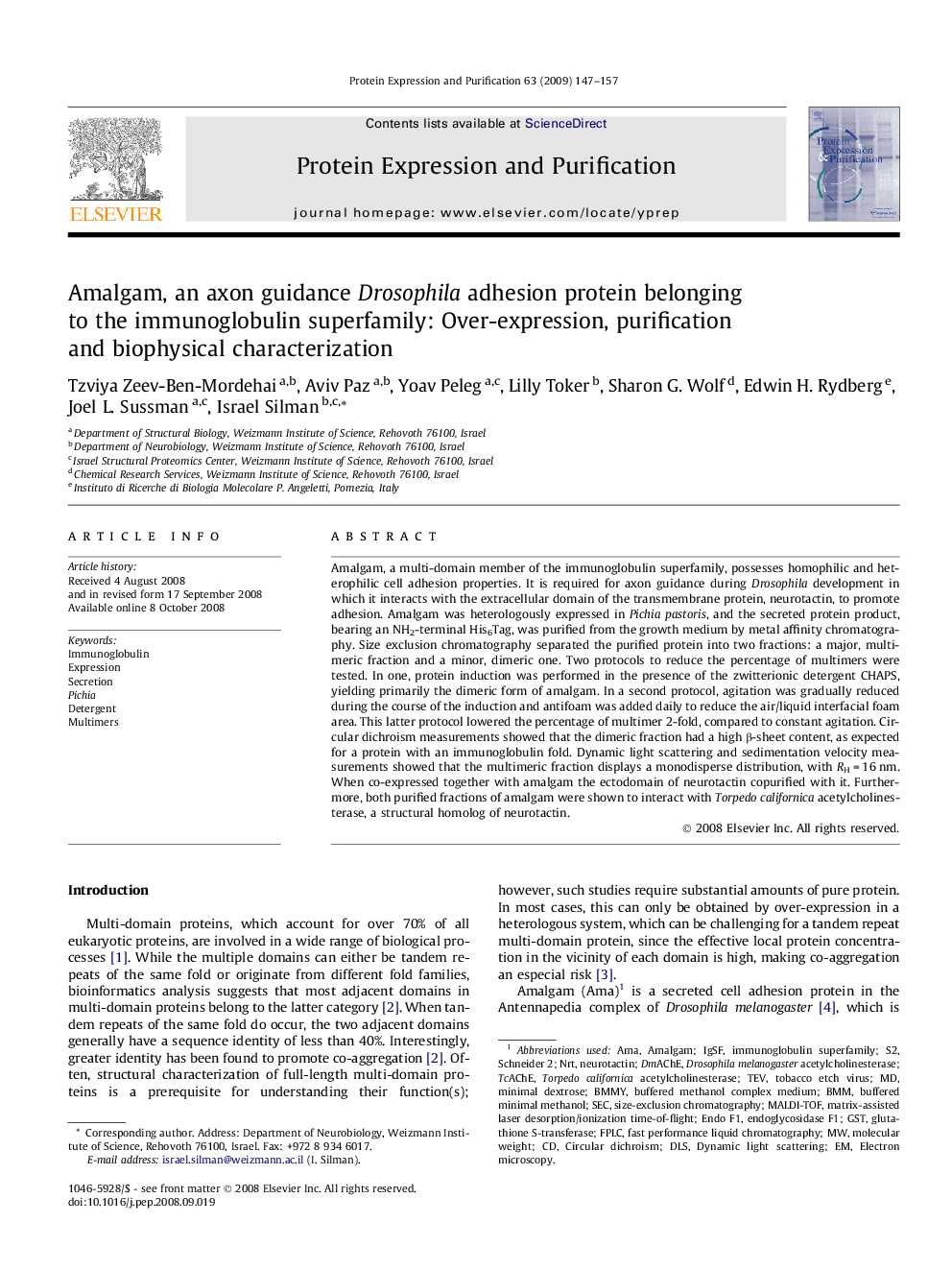| Article ID | Journal | Published Year | Pages | File Type |
|---|---|---|---|---|
| 2020976 | Protein Expression and Purification | 2009 | 11 Pages |
Amalgam, a multi-domain member of the immunoglobulin superfamily, possesses homophilic and heterophilic cell adhesion properties. It is required for axon guidance during Drosophila development in which it interacts with the extracellular domain of the transmembrane protein, neurotactin, to promote adhesion. Amalgam was heterologously expressed in Pichia pastoris, and the secreted protein product, bearing an NH2-terminal His6Tag, was purified from the growth medium by metal affinity chromatography. Size exclusion chromatography separated the purified protein into two fractions: a major, multimeric fraction and a minor, dimeric one. Two protocols to reduce the percentage of multimers were tested. In one, protein induction was performed in the presence of the zwitterionic detergent CHAPS, yielding primarily the dimeric form of amalgam. In a second protocol, agitation was gradually reduced during the course of the induction and antifoam was added daily to reduce the air/liquid interfacial foam area. This latter protocol lowered the percentage of multimer 2-fold, compared to constant agitation. Circular dichroism measurements showed that the dimeric fraction had a high β-sheet content, as expected for a protein with an immunoglobulin fold. Dynamic light scattering and sedimentation velocity measurements showed that the multimeric fraction displays a monodisperse distribution, with RH = 16 nm. When co-expressed together with amalgam the ectodomain of neurotactin copurified with it. Furthermore, both purified fractions of amalgam were shown to interact with Torpedo californica acetylcholinesterase, a structural homolog of neurotactin.
